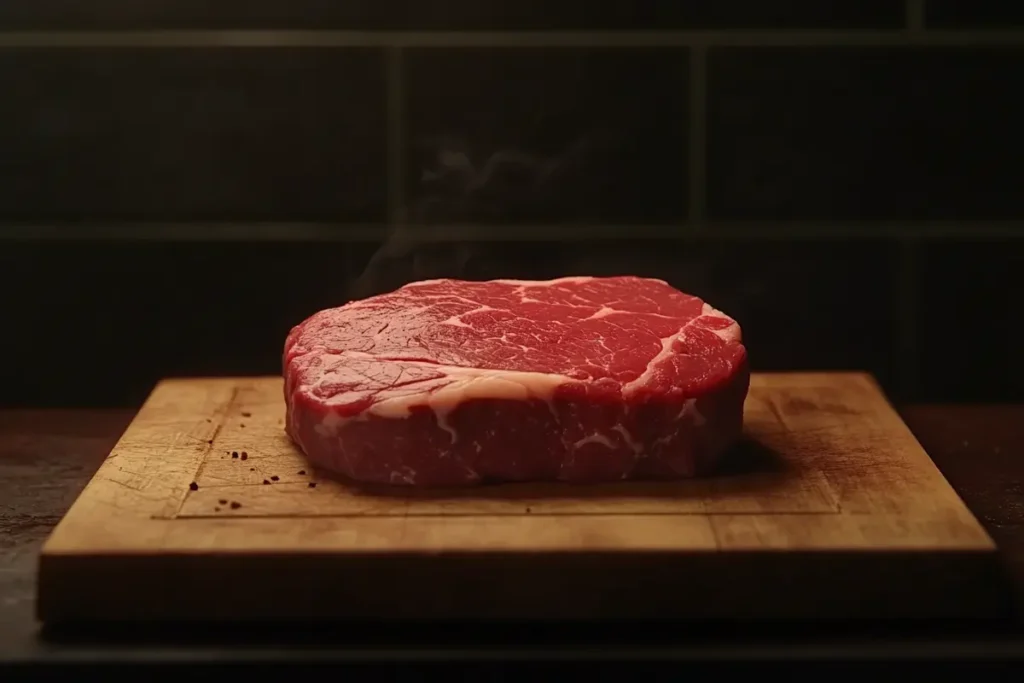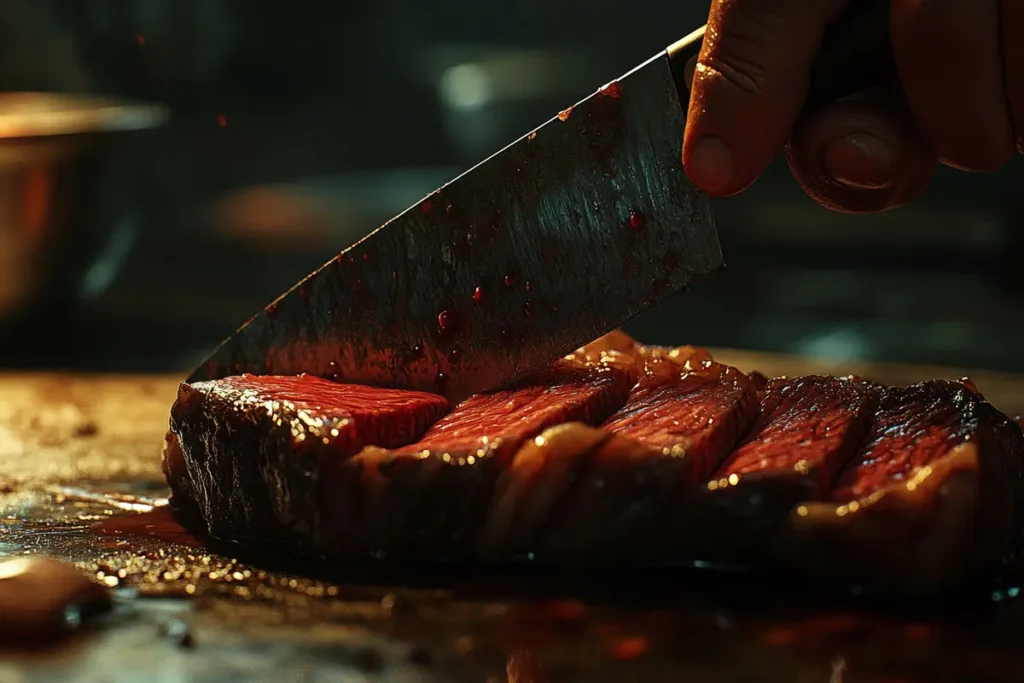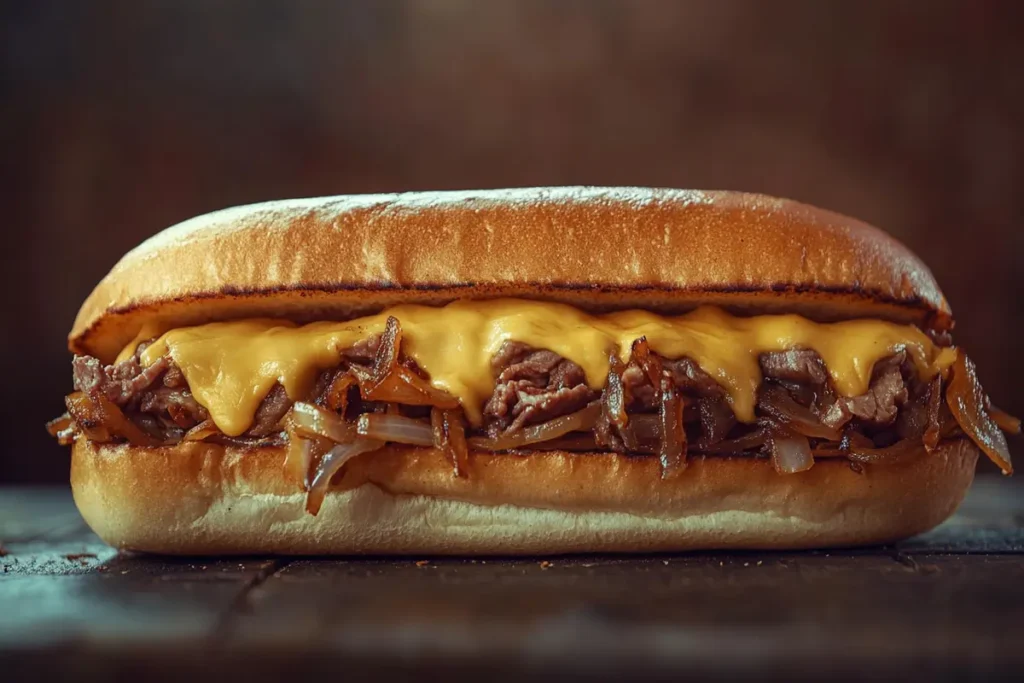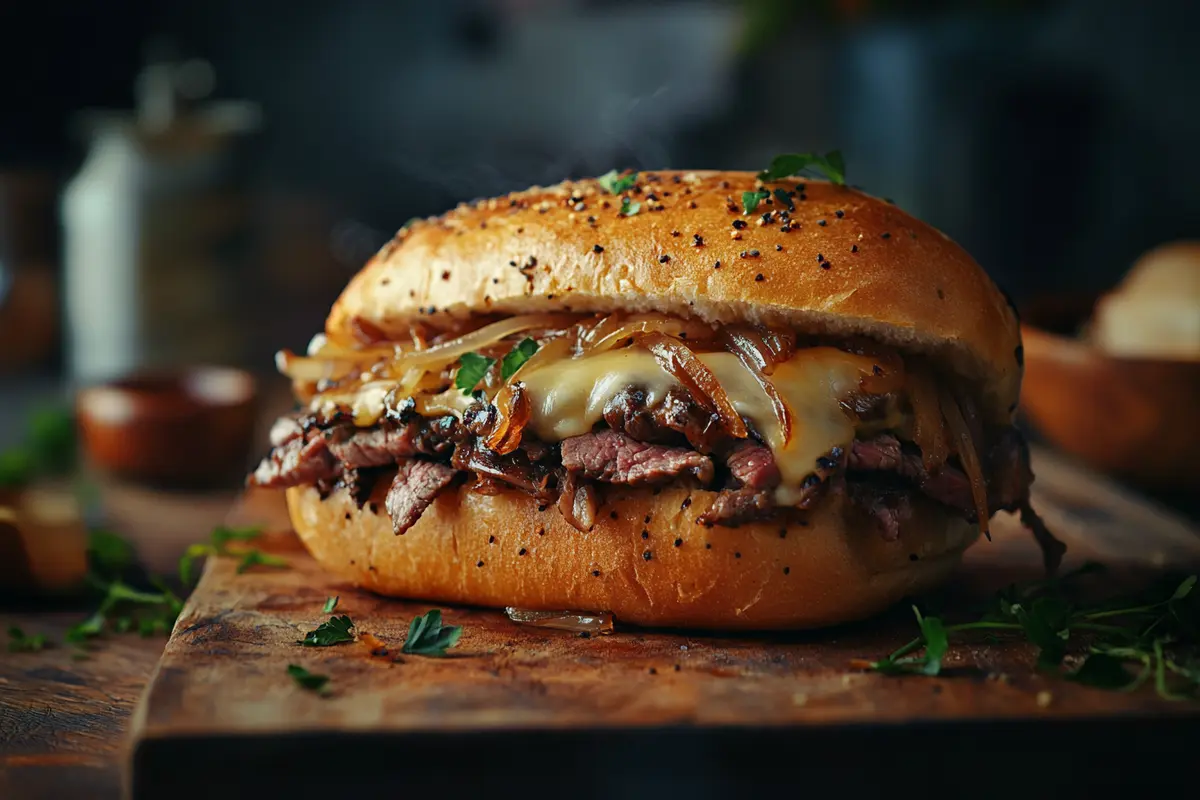What cut of meat is good for Philly cheesesteak? Many home cooks ask this question when trying to recreate that iconic street food at home. Authentic Philly cheesesteaks rely on specific cuts of beef. Therefore, choosing the right cut matters. The perfect cheesesteak begins with tender, thinly sliced beef that melts in your mouth.
Understanding the Importance of Cut Selection
For many cooks, the path to a memorable Philly cheesesteak begins with choosing the right steak. Traditional vendors often pick certain cuts because they deliver that signature flavor. What cut of meat is good for Philly cheesesteak? Most experts agree that ribeye stands out. In fact, ribeye provides the perfect balance of tenderness and rich flavor. However, ribeye’s price tag can seem high. In that case, alternatives like top round or sirloin may serve as acceptable substitutes.
Moreover, the chosen cut impacts the final texture. A well-marbled steak melts fat throughout the cooking process. Therefore, each bite bursts with flavor. In addition, tender cuts allow you to achieve paper-thin slices that cook evenly on a hot griddle. For example, ribeye’s abundant marbling ensures it won’t dry out. As a result, even quick cooking over high heat retains juiciness. Ultimately, selecting the right cut forms the foundation of a proper Philly cheesesteak experience.
Why Ribeye Is the Top Choice
Ribeye often tops the list when asking, What cut of meat is good for Philly cheesesteak? This cut comes from the rib section of the cow. Therefore, it has rich marbling and intense flavor. Its fat content ensures the meat stays succulent, no matter how thin you slice it. For a classic Philly cheesesteak, ribeye’s tenderness lets you achieve that iconic melt-in-your-mouth texture.
However, ribeye is not just about fat. It also offers a buttery flavor that pairs perfectly with caramelized onions and creamy cheese. In addition, it’s easy to handle. When slightly chilled, ribeye slices thinly without tearing. This quality ensures consistent pieces that cook rapidly. Above all, ribeye’s marbling sets it apart. When heated, the fat renders and coats every bite with savory juices.

Considering Alternatives: Sirloin, Top Round, and Flank
While ribeye earns the crown, not everyone wants to spend extra money on their cheesesteak meat. Therefore, knowing other options helps. Sirloin can serve as a solid alternative. It’s leaner than ribeye, but still tender enough for thin slicing. In addition, sirloin provides a beefy taste that doesn’t overwhelm. With proper trimming and slicing, sirloin can create a satisfying Philly cheesesteak.
Moreover, top round is another option. This cut is affordable and widely available. However, it’s leaner and requires careful preparation to avoid toughness. Therefore, if using top round, slice it as thinly as possible. Marinate it briefly to enhance tenderness if desired. Similarly, flank steak can also work in a pinch. Flank’s strong beefy flavor and grain structure requires slicing against the grain. In short, these alternatives may not match ribeye’s luxury, but they still produce enjoyable results when handled properly.
Enhancing Flavor Through Marbling and Fat Content
When exploring what cut of meat is good for Philly cheesesteak?, remember that fat equals flavor. Marbling, the tiny streaks of fat within the muscle, impacts tenderness and taste. Cuts with more marbling stay moist during quick cooking. Therefore, it’s no surprise that ribeye, known for its abundant marbling, reigns supreme.
In addition, the type of fat also matters. Intramuscular fat melts at a low temperature, coating each strand of muscle. As a result, the steak tastes rich. When grilled or sautéed for a cheesesteak, these rendered fats amplify meaty depth. Above all, it’s this balance of lean muscle and fat that gives Philly cheesesteaks their signature savory bite.
Achieving the Perfect Slice
No matter which cut you choose, slicing technique matters. Even the best steak won’t taste right if cut incorrectly. For what cut of meat is good for Philly cheesesteak? to matter, the final slices must be thin. This ensures quick cooking and a tender bite. In addition, cutting against the grain shortens the muscle fibers. Shorter fibers mean tenderness.
To slice properly, chill the steak slightly before cutting. This firms the meat and makes it easier to slice razor-thin. A sharp knife is crucial. Work slowly, making even, controlled cuts. Above all, patience pays off. Well-sliced beef cooks evenly, browns beautifully, and yields the tender texture that defines a Philly cheesesteak.

Cooking Methods for the Chosen Cut
The cooking method can enhance or ruin a well-chosen cut. For a classic Philly cheesesteak, a flat-top grill or cast-iron skillet works best. The high, even heat caramelizes the beef’s surface and locks in juices. Therefore, once you know what cut of meat is good for Philly cheesesteak?, you must master the cooking approach too.
Preheat your cooking surface until it’s very hot. Add a bit of neutral oil to prevent sticking. Place the thinly sliced beef on the hot surface and spread it out. In addition, season lightly with salt and pepper. The meat cooks quickly, so watch closely. As the slices brown, flip or toss them gently. Avoid overcooking. Too much heat for too long can dry out even a great cut.
Balancing Meat with Other Ingredients
A Philly cheesesteak is more than just meat. While selecting what cut of meat is good for Philly cheesesteak? is vital, remember the supporting players. Caramelized onions add sweetness and depth. Sautéed bell peppers, though optional, bring color and flavor. Cheese, often provolone or Cheez Whiz, melts over the hot meat, binding everything together.
In addition, the roll matters. An authentic Philly cheesesteak often features an Amoroso roll, soft and slightly chewy. If unavailable, choose a similar hoagie roll. Lightly toasting the roll provides structure. Above all, the goal is harmony. The meat, onions, cheese, and bread should unite into one glorious bite.
Considering the Role of Provolone vs. Cheez Whiz
Though not directly related to what cut of meat is good for Philly cheesesteak?, cheese selection impacts the overall experience. Provolone offers a mild, creamy flavor that complements the beef. Cheez Whiz provides a salty, gooey texture that some argue captures the cheesesteak’s true spirit. In addition, some cooks mix both for complexity.
However, cheese cannot fix a poor meat choice. Even the best cheese fails to rescue tough, flavorless beef. Therefore, start with a proper cut. Once you have your tender, well-sliced steak, any cheese you pick will shine. Above all, the cheese should melt smoothly over the hot meat. A perfect Philly cheesesteak relies on quality steak and balanced ingredients.
The History Behind the Perfect Cut
Philly cheesesteaks originated in Philadelphia in the early 20th century. Founders Pat and Harry Olivieri allegedly started with thin-sliced steak and onions. Over time, their sandwich gained fame. But what cut of meat is good for Philly cheesesteak? Early vendors chose flavorful, tender cuts that cooked quickly. As the dish evolved, ribeye emerged as the gold standard.
This history matters because it connects modern cooks to tradition. Authentic cheesesteak stands in Philly still rely on well-marbled cuts. Therefore, when you pick a ribeye or a similarly tender cut, you honor the original vision. Above all, you taste a legacy that has delighted generations.
Cost Considerations and Value
Ribeye tends to cost more than other cuts. Therefore, budget-conscious cooks might hesitate. But consider the payoff. A single Philly cheesesteak doesn’t require a large steak. Thin slicing stretches the meat, filling multiple sandwiches. In addition, flavor quality often justifies the cost. You can also watch for sales or buy in bulk.
If price remains a concern, explore sirloin or top round. With proper technique, these cuts still produce enjoyable cheesesteaks. For example, marinate leaner cuts briefly to boost tenderness. In addition, slice them extra thin and cook gently. Above all, remember that technique can compensate for a leaner cut.
Sourcing Quality Meat
High-quality meat enhances flavor and texture. When asking what cut of meat is good for Philly cheesesteak?, also ask where to find it. Seek out a butcher or a trusted grocery store with quality beef. Look for bright, cherry-red meat with fine marbling. Avoid steaks with excessive gristle or bruising.
In addition, ask your butcher’s advice. They know their inventory and can suggest the freshest, most tender options. Sometimes, they might even pre-slice ribeye for you. Above all, building a relationship with your butcher ensures consistent results. Over time, you can explore different cuts and find your personal favorite.
Storage and Preparation Tips
Proper storage preserves the quality of your chosen steak. Keep it cold until ready to slice and cook. Wrap it well and store it in the refrigerator for no more than a few days. If you can’t cook it immediately, freeze it. In addition, freezing the steak slightly before slicing can help achieve thinner cuts.
Before cooking, pat the meat dry with a paper towel. Removing surface moisture allows for better browning. Season the meat lightly so as not to mask its natural flavor. Above all, freshness counts. A fresh, well-handled steak yields a tastier Philly cheesesteak.
Pairing Meat With Classic Toppings
Though the meat is the main event, don’t neglect the toppings. Caramelized onions provide sweetness and aroma. If you enjoy bell peppers, slice and sauté them until tender. Mushrooms can add an earthy note. In addition, consider hot cherry peppers for some spicy kick.
Each topping interacts differently with the chosen beef. A rich, fatty cut like ribeye can handle bold flavors. A leaner cut may benefit from extra moisture or sweetness. Above all, strike a balance. The goal is harmony between meat, cheese, and toppings.
Troubleshooting Common Issues
Even with the best cut, mistakes happen. If the meat turns tough, it may be overcooked or sliced too thickly. Adjust your slicing technique or reduce cooking time. If the flavor seems bland, season lightly or consider a more marbled cut next time.
In addition, pay attention to temperature. A too-cool pan prevents browning and encourages moisture loss. Heat the pan well, then cook the meat quickly. Above all, practice leads to perfection. Each attempt at making a Philly cheesesteak improves your understanding of the process.
Health Considerations
A cheesesteak is a hearty meal. Rich meat, cheese, and bread make it indulgent. If health concerns you, choose a leaner cut and light cheese. In addition, load up on vegetables. Peppers, mushrooms, and onions add nutrients and flavor.
To reduce saturated fat, trim visible fat from the steak. Consider whole-grain rolls for more fiber. While these changes alter the classic formula, they still deliver a tasty sandwich. Above all, moderation and balance keep your cheesesteak craving in check.
Presenting Your Cheesesteak
Presentation may not be the top priority, but a well-constructed cheesesteak looks inviting. Slice the roll, fill it with juicy meat, top with melty cheese, and garnish with onions. In addition, serve it hot to keep the cheese gooey.
Above all, a neat, well-filled sandwich entices your senses. The aroma, the sight of melted cheese, and the warm bread together signal a comforting meal. Even if the question is what cut of meat is good for Philly cheesesteak?, remember that the final presentation also matters.

Conclusion: The Best Cut for Perfect Philly Cheesesteaks
So, what cut of meat is good for Philly cheesesteak? The best choice is often ribeye. Its marbling, tenderness, and beefy flavor stand at the heart of an authentic Philly cheesesteak. However, if ribeye proves too pricey or unavailable, sirloin, top round, or flank can still yield a delicious sandwich. The key lies in careful slicing, quick cooking, and balancing flavors. Above all, the journey toward the perfect Philly cheesesteak begins with the right cut of meat. Once you master this choice, each bite brings you closer to cheesesteak perfection.
Frequently Asked Questions
What is the best cut of meat for Philly Cheesesteak?
Ribeye is often the best. Its rich marbling, tenderness, and strong beef flavor make it ideal for a classic Philly cheesesteak.
What is cheesesteak meat called at the store?
At the store, you may find it labeled as “steak for cheesesteak,” “shaved steak,” or thinly sliced ribeye. Some butchers label it as “chip steak.”
What cut of beef is used for shaved steak?
Shaved steak often comes from leaner cuts like top round or sirloin. However, for Philly cheesesteaks, ribeye shaved thin provides superior flavor and texture.

